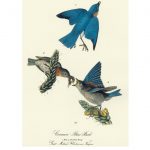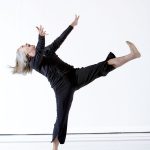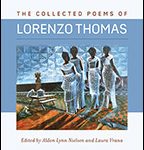

A Spicing of Birds is a unique and beautifully illustrated anthology, pairing poems from one of America’s most revered poets with evocative classic ornithological art from sources including Mark Catesby, John James Audubon, Alexander Wilson, Robert Ridgway, Louis Agassiz Fuertes, and Cordelia Stanwood. Emily Dickinson is known for her posthumous collection of unconventional work that played with unusual punctuation and capitalization. Her unique voice is known among many, but lesser-known is her great love of birds—in her collected poems, birds are mentioned 222 times, sometimes as the core inspiration of the poem. This book contains thirty-seven of Dickinson’s poems featuring birds common to New England. Many lesser-known poems are brought to light, renewing our appreciation for Dickinson’s work.


Even today, we find Emily Dickinson to be elusive and enigmatic. in 1998, Paris Press published Open Me Carefully: Emily Dickinson’s Letters to Susan Huntington Dickinson, edited by Ellen Louise Hart and Martha Nell Smith, and now available through Wesleyan. The book delves into another underdeveloped facet of Dickinson’s life—her queerness. Including selections of letters from Dickinson’s thirty-six year correspondence with sister-in-law and romantic interest Susan Huntington, Hart and Smith dispel the common depiction of Dickinson as a lonely spinster, revealing letters that Smith calls “pretty sexy.” Smith also pointedly observes the gendered way in which Dickinson is often portrayed as dark and lonely despite this romantic correspondence, saying, “I found myself thinking: If all of this was sent to any man in Dickinson’s life, there wouldn’t be any kind of argument about who was the love of her life.” The book inspired Wild Nights With Emily, a major motion picture, starring Molly Shannon, that candidly explores Dickinson’s fluid sexuality.
Dickinson’s letters continue to be a rich source of access to her intensely private life. In A Spicing of Birds, the editors’ introduction draws extensively from Dickinson’s letters, providing fascinating insights into her relationship with birds. Her fascination with, and inspiration from, birds are given the same amount of importance in this book as her romantic yearnings are in previous publications. The illustrations, by late 18th century to early 20th century artists, are often so apt as to seem to have been created with the poems in mind. The editors also discuss the development and growth of birding in the nineteenth century as well as the evolution of field guides and early conservation efforts. Brief biographies of the artists are included in an appendix. A Spicing of Birds is an eloquent tribute to the special place held by birds in our lives and imaginations, adding to the continuing collaborative biography of one of the most important American poets.
“1177”
A prompt—executive Bird is the Jay—
Bold as a Bailiff’s Hymn—
Brittle and Brief in quality—
Warrant in every line—
Sitting a Bough like a Brigadier
Confident and straight—
Much is the mien of him in March
As a Magistrate—
















